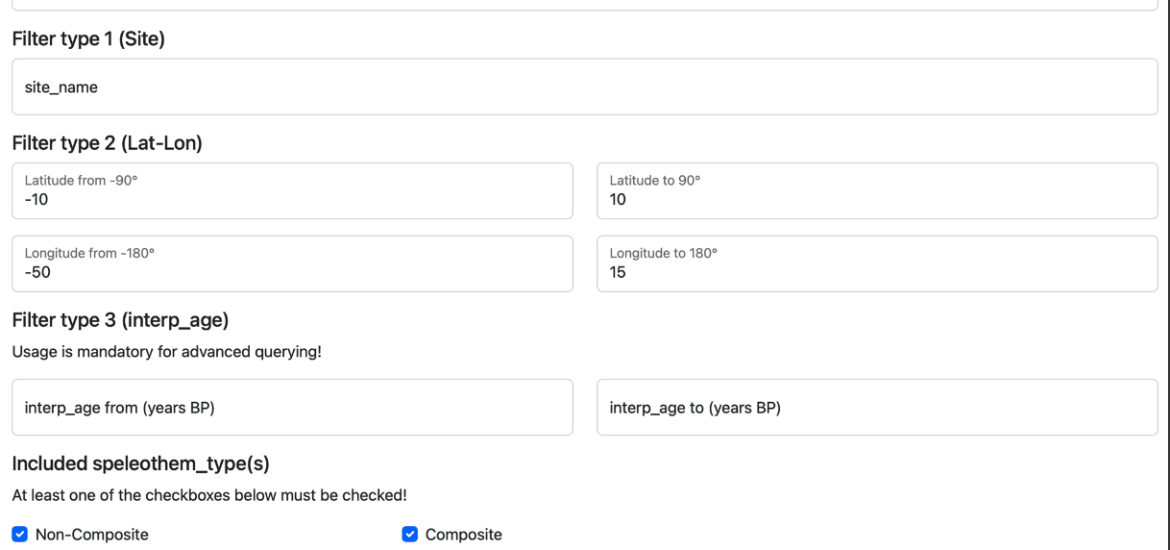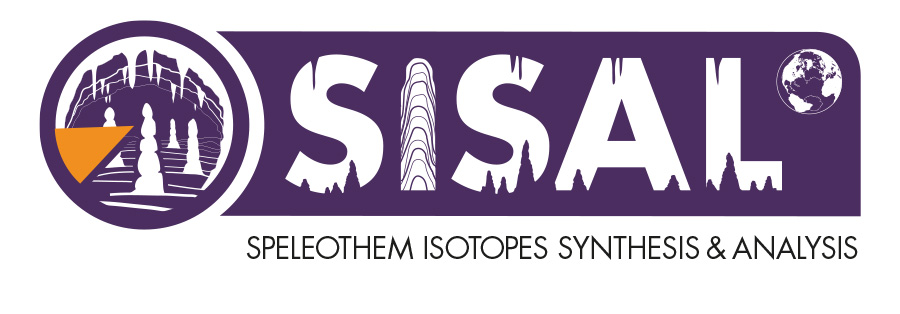- Home
- All News Overview
- The SISAL WebApp - a PAGES Data Stewardship Scholarship Success Story

Wednesday, 4 October, 2023
In 2021, PAGES launched an annual stipend/scholarship for data stewardship. This stipend is available to PAGES working groups to help collate and safely store valuable research data.
Background
Data stewardship is a central objective of PAGES. These activities are part of the entire lifecycle of research, from the conception to the archiving of data, with the goal of providing future data users with high quality and easily accessible data. And while PAGES has always strongly encouraged working groups to deposit all data produced within the framework of PAGES activities into long-term repositories such as NOAA-NCEI (World Data Service for Paleoclimatology), Neotoma Paleoecology Database, or PANGAEA, no direct financial support had been allocated for planning, creation, curation, and updating of databases, nor to their transfer to such a long-term public repository. PAGES has become increasingly aware of the importance of this aspect of the output by PAGES working groups (WG).
The PAGES Data Stewardship Scholarship (DSS) was launched in order for a data steward to work on data compilation and curation, with the goal of generating a data product for publication in a data-oriented journal, or similar.
This stewardship is available to the PAGES WGs only.
SISAL DSS
SISAL (Speleothem Isotopes Synthesis and AnaLysis) was awarded a DSS in November 2021. The work began in the early part of 2022.
With the help of Micah Wilhelm (Swiss Federal Institute for Forest, Snow and Landscape Research WSL) and Péter Tanos (Hungarian University of Agriculture and Life Sciences), and led by Franziska Lechleitner (Oeschger Centre for Climate Change Research and University of Bern) and Nikita Kaushal (University of Oxford) the DSS stipend was planned to support activities in line with the phase 2 of SISAL's scientific data goals:
1. Synthesise speleothem data of multiple novel proxies, in addition to the more traditionally measured oxygen and carbon isotopic data currently available in the SISAL database. The novel proxies include trace element ratios of Sr/Ca, Mg/Ca, Ba/Ca, U/Ca, P/Ca, and Sr isotope ratios.
Additional metadata were added to support the additional proxy fields including stalagmite scans/photos to enable interpretation of data.
Since the beginning of the DSS, SISAL WG members developed an updated database structure to integrate the new trace element datasets in the existing SISAL database.
Throughout 2022, SISAL finished collecting the identified records, and carried out an extensive series of quality checks.
The scholarship (DSS) assisted in:
i) automatizing some of the quality checking and data uploading protocols; and
ii) advising the WG members on good practices with respect to data collection and synthesis, and database construction.
In a second step, the DSS aided in setting up a beta version of the SISAL v3 database.
2. Add new speleothem isotope records to the existing SISAL database.
This part of the project was ongoing in tandem with the trace element data collection. The new records were incorporated into the SISAL v3 database.
3. Create a simple, user-friendly app to mine the database.
This third goal was achieved in 2023.
The SISAL Database and the WebApp
In August 2023, the group revealed the new SISAL WebApp in order to query the SISAL database. In an accompanying description paper by Hatvani IG et al. published in Quaternary Research the authors maintain that "The software provides an easy-to-use front-end interface to mine data from the SISAL database while providing the SQL code alongside as a learning tool. It allows for simple and increasingly complex querying of the SISAL database based on various data and metadata fields."
Shortly thereafter, Kaushal et al. revealed a preprint in Earth System Science Data on the updated version 3 of the SISAL database: "SISALv3: A global speleothem stable isotope and trace element database". The substantial expansion of the database from version 2, which now includes speleothem data from 364 sites from across the globe, including 94 Mg/Ca, 83 Sr/Ca, 51 Ba/Ca, 25 U/Ca, 29 P/Ca and 14 Sr-isotope records, "constitutes a unique resource of speleothem paleoclimate information that allows regional-to-global paleoclimate analyses based on multiple geochemical proxies, allowing more robust interpretations of past hydroclimate and comparisons with isotope-enabled climate models and other earth system and hydrological models."
Users can now look forward to an updated and expanded database, as well as an easy-to-use WebApp in order to mine the data.
Further information
> Access the article "The SISAL webApp: exploring the speleothem climate and environmental archives of the world"
> Access article "SISALv3: A global speleothem stable isotope and trace element database"
> Find out more about the SISAL working group
> Contact a member of the SISAL working group
> Find out more about the PAGES Data Stewardship Scholarship (only available to current, or recently sunsetted PAGES working groups)
